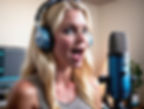If you're searching for a microphone to capture clear, professional-quality vocals without breaking the bank, you're probably asking: Is the Blue Yeti good for singing? Many musicians struggle with finding an affordable microphone that delivers studio-level results. The Blue Yeti offers excellent versatility for beginners, but does it really meet the needs of singers? In this guide, we’ll break down how the Blue Yeti performs for vocal recording and how you can get the best possible sound from this popular USB mic.
Is the Blue Yeti Good for Singing?
In short, Yes, the Blue Yeti is a fantastic choice for singing, especially for beginners. Its cardioid mode isolates vocals and minimizes background noise, delivering clear, crisp sound. With user-friendly features like adjustable gain and real-time monitoring, it’s perfect for home studio setups. While it may not have the warmth of high-end mics, the Blue Yeti is a versatile and affordable option for excellent vocal recordings.
How to Use the Blue Yeti for Vocals
To get the most out of your Blue Yeti for vocals, setting it to the cardioid mode is essential for isolating sound directly in front of the microphone while reducing background noise. This pattern is ideal for singers recording in home studios. Keep the mic about 6-12 inches away from your mouth, and always use a pop filter to eliminate plosive sounds like “P” and “B.” Adjust the gain carefully to avoid distortion, ensuring a crisp, clear recording every time.
What is the Best Setting for the Blue Yeti Mic for Singing?
For the best vocal quality, set your Blue Yeti to cardioid mode, which focuses on capturing sound from the front while minimizing background noise. Keep the gain low to medium, adjusting it as needed to prevent distortion without sacrificing volume. Pair this with a 48kHz sample rate for clear, high-quality sound. These settings allow you to achieve professional-level recordings with minimal equipment.
Why Does My Blue Yeti Recording Sound Echoey?
If your recordings sound echoey, it’s likely your room acoustics—not the microphone. Bare walls, hard surfaces, or floors without carpeting cause sound reflections that the Yeti picks up, creating an unwanted echo. To fix this, add soft furnishings like rugs, curtains, or foam panels to absorb excess sound and create a cleaner recording environment. This simple adjustment can dramatically improve the clarity and warmth of your vocal recordings.
Can I Record Two People with a Single Blue Yeti?
Yes, the Blue Yeti’s bi-directional and omnidirectional modes make it possible to record two people with a single microphone, ideal for interviews or duets. For one-on-one setups, the bi-directional pattern captures sound from both sides, while omnidirectional mode is better for group recordings. While convenient, sharing a mic can reduce sound isolation, so for professional results, separate microphones are often preferred.
Is the Blue Yeti Good Enough for Voice Acting?
The Blue Yeti is a popular choice for entry-level voice actors due to its clear audio and ease of use. Its cardioid mode captures detailed vocal performances while minimizing ambient noise, making it suitable for professional-quality voiceovers. However, for those advancing in the field, higher-end condenser microphones might offer better sound depth and warmth. Still, the Blue Yeti provides excellent performance for its price, especially for newcomers.
Blue Yeti vs. Audio-Technica AT2020 for Podcasts
When it comes to podcasting, the Blue Yeti’s USB convenience and multiple polar patterns make it ideal for beginners or multi-person setups. In contrast, the Audio-Technica AT2020 offers superior sound quality with a more focused, professional-grade output but requires an audio interface, adding complexity. The Blue Yeti shines in flexibility, while the AT2020 is favored by those seeking studio-quality sound. For ease of use and versatility, the Blue Yeti is the go-to, while the AT2020 excels in pure audio fidelity.
AT2020
What Accessories Do I Need with the Blue Yeti?
To get the most out of your Blue Yeti, using essential accessories like a pop filter and shock mount is crucial for improving sound quality. A pop filter minimizes harsh plosive sounds, while a shock mount helps reduce vibrations that can interfere with clarity. Adding a boom arm allows better mic positioning, making your workspace more organized and your recordings more professional. These small additions can greatly enhance the overall quality of your vocal performances.
Can I Use the Blue Yeti with a Smartphone or Tablet?
Yes, the Blue Yeti can be used with smartphones and tablets, but you’ll need a USB adapter such as an Apple adapter for iOS devices or a USB-C cable for Android. While it’s not as portable as some smaller microphones, this setup allows for high-quality mobile recording. Keep in mind that you may also need a powered USB hub for optimal performance, depending on your device’s power output. This makes the Yeti versatile for both home and on-the-go recording sessions.
Does the Blue Yeti Work on Linux or Chromebooks?
Yes, the Blue Yeti is compatible with Linux and Chromebooks, just like it is with Windows and macOS. Thanks to its plug-and-play USB connection, it requires no additional drivers for most systems. Popular software like Audacity and OBS can easily recognize the Yeti on these platforms, making it a reliable option for users across various operating systems. This flexibility enhances its appeal for podcasters, musicians, and streamers alike.




